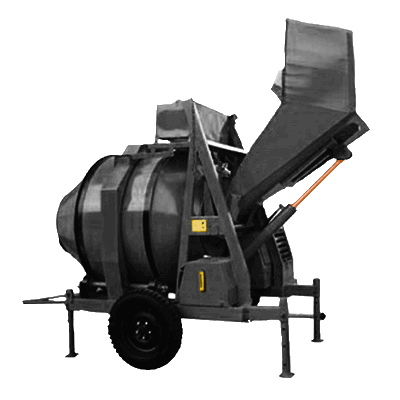Cement Mixer: Difference between revisions
No edit summary |
|||
| Line 18: | Line 18: | ||
'''Uses''' | '''Uses''' | ||
* | *{{Lathe}} - Drum | ||
* | *{{Motor}} - Actuation | ||
* | *{{Power Cube}} - Power | ||
* | *{{LifeTrac}} - Mounting | ||
* | *{{Furnace}} - Steel | ||
* | *{{Torch Table}} - Cutting | ||
* | *{{Ironworker}} - Holes | ||
'''Creates''' | '''Creates''' | ||
Revision as of 22:26, 23 September 2011
| Cement Mixer | ||
|---|---|---|
| Home | Research & Development | Bill of Materials | Manufacturing Instructions | User's Manual | User Reviews | 
| |
Overview
A Cement Mixer "is a device that homogeneously combines cement, aggregate such as sand or gravel, and water to form concrete" (Wikipedia, 2011)
Detailed Description
A concrete mixer (also commonly called a cement mixer) is a device that homogeneously combines cement, aggregate such as sand or gravel, and water to form concrete. A typical concrete mixer uses a revolving drum to mix the components.
Concrete is used more than any other man-made material in the world. As a part of the GVCS, it unlocks a range of building techniques and methods.
Product Ecology
Uses
 Multimachine - Drum
Multimachine - Drum Electric Motor Generator - Actuation
Electric Motor Generator - Actuation Power Cube - Power
Power Cube - Power Tractor - Mounting
Tractor - Mounting Induction Furnace - Steel
Induction Furnace - Steel CNC Torch Table - Cutting
CNC Torch Table - Cutting Ironworker - Holes
Ironworker - Holes
Creates
- Workshop, Greenhouse, HabLab floors and Foundations
- Multimachine foundation
- Foundry walls
See Product Ecologies for more information.
Components
- Drum
- Frame
- Motor
- Water Feed
- Hinge
OSE Project Status/Schedule
The concrete mixer is currently in development and is undergoing CAD stages of design. It is considered a priority for the 2011 Infrastructure Buildout, as a part of the GVCS Rollout
See Also
Links
